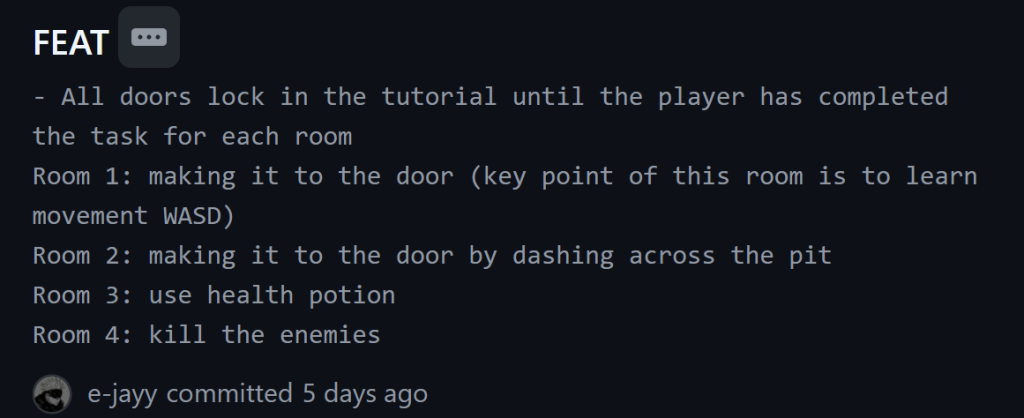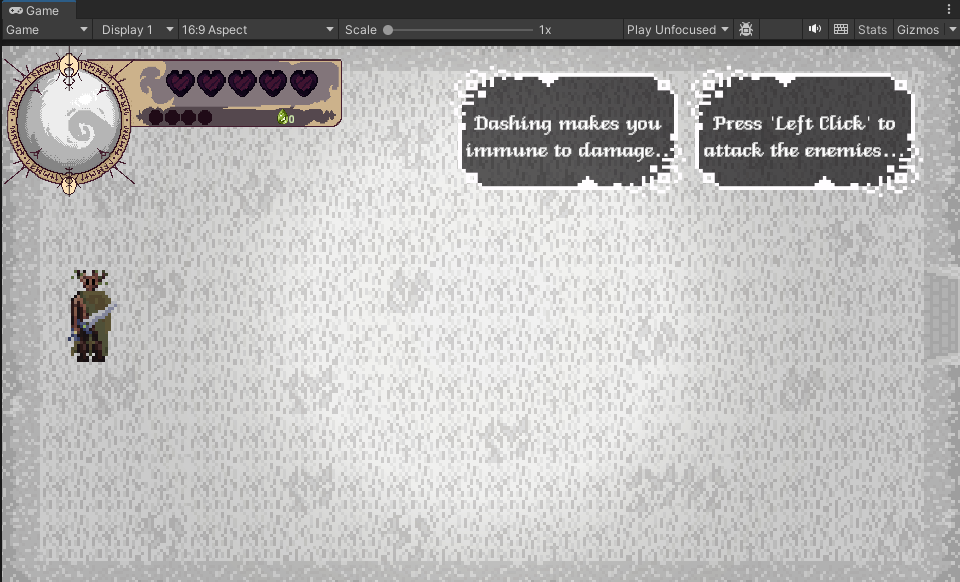An essential part to any game, the tutorial is a scene at the start of the game that essentially teaches the player how to play the game at its core.
Our Mechanics Designer, Ayse, created a plan about what the tutorial level would be like:

With this plan, I started development on the tutorial scene. Using the room prefabs, I created a link of four rooms side to side, starting with an R Room, then three LR rooms (These room labels are explained in this Procedural Room Generation Development Post). The player would start in the first R Room and would make their way rightwards through the LR rooms, the last of which would take the player to the Hub scene.
The reason I made the player walk rightwards as opposed to downwards in the diagram, was due to a discussion our group had in person that wasn’t recorded, so I am unable to show screen shots of this conversation.
Bug fixing

To fix the enemy not dying in the tutorial, I simply added a RoomManager gameobject and referenced it in the Whisper’s Enemy_Whisper script, a more in depth explanation is in this Development Post, at the commit on April second.

To incentivise players to complete the tutorial the intended way, I implemented a system to lock players into certain rooms of the tutorial, only unlocking them if the player had completed the task we envisioned for the room.

As the tutorial is meant to teach the player how to play the game, I added UI prompts throughout the tutorial to help the player complete each room.

